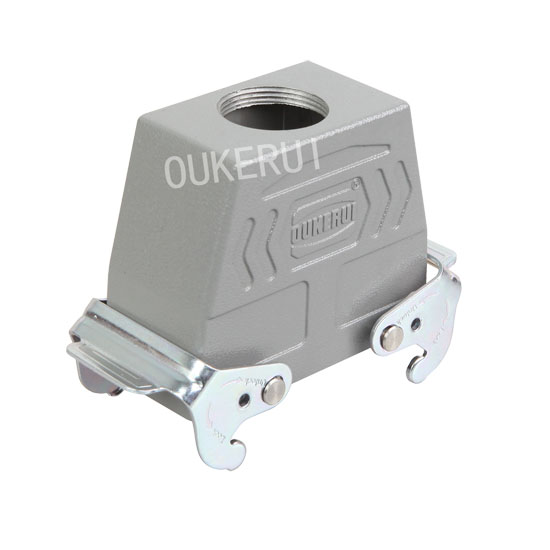Ensuring Reliability: How Heavy Duty Connector Hoods Secure Connections in Industrial Environments
2024-04-12
In the complex and demanding landscape of industrial operations, maintaining secure electrical connections is paramount for ensuring reliability, safety, and efficiency. Heavy Duty Connector (HDC) hoods stand as formidable guardians, playing a crucial role in securing connections and protecting critical electrical components from environmental hazards and mechanical stresses. Let's delve into how HDC hoods ensure secure connections in industrial environments and contribute to the integrity of electrical systems.
1. Robust Housing Construction
Heavy Duty Connector hoods are engineered with robust housing construction using durable materials such as high-grade plastics, metals, or composite alloys. This sturdy construction provides a secure enclosure for electrical connections, protecting them from external impacts, vibrations, and mechanical stresses. The rugged housing of HDC hoods ensures that connectors remain securely fastened and insulated, maintaining reliable electrical continuity even in dynamic and high-stress environments.
2. Secure Locking Mechanisms
HDC hoods feature secure locking mechanisms that keep connectors firmly in place, preventing accidental disconnection and ensuring reliable electrical connections. Whether utilizing latch locks, screw locks, or bayonet locks, these mechanisms provide a dependable means of securing connectors within the hood. Once locked in position, connectors remain securely fastened, maintaining electrical continuity and minimizing the risk of interruptions or failures.
3. Watertight and Dustproof Sealing
Advanced sealing mechanisms in HDC hoods create a watertight and dustproof enclosure around electrical connections, safeguarding them from moisture, dust, and contaminants. Gaskets, O-rings, and compression seals form a tight seal between the hood and connector, preventing ingress of water, dust, and debris into the enclosure. This sealed environment ensures the integrity of electrical connections and protects them from corrosion, insulation degradation, and electrical failures caused by environmental hazards.
4. Cable Strain Relief
Proper strain relief is essential for securing cables within HDC hoods and minimizing the risk of cable damage or connector failure due to mechanical stress. HDC hoods often include built-in cable strain relief features such as clamps, tie-down points, and strain relief modules that secure and support cables, reducing tension, bending, and fatigue. By providing effective strain relief, HDC hoods ensure that cables remain securely attached and properly routed, maintaining reliable electrical connections over time.
5. Compliance with Standards
Heavy Duty Connector hoods are designed and tested to comply with industry standards and specifications for electrical safety and performance. Manufacturers conduct rigorous testing to ensure that HDC hoods meet or exceed the requirements of standards such as IEC 61984 and UL 1977, validating their ability to provide secure connections in industrial applications. Compliance with standards ensures that HDC hoods offer reliable performance and compatibility with a wide range of equipment and systems.
Conclusion
Heavy Duty Connector hoods play a crucial role in ensuring secure connections and protecting critical electrical components in industrial environments. With robust housing construction, secure locking mechanisms, watertight sealing, cable strain relief, and compliance with standards, HDC hoods provide a dependable solution for securing connections and maintaining electrical integrity. By investing in high-quality HDC hoods engineered to ensure secure connections, industrial operators can minimize the risk of interruptions, failures, and safety hazards, thereby optimizing the reliability and performance of their electrical systems.



